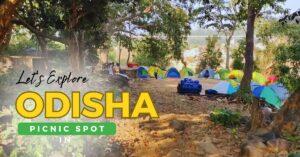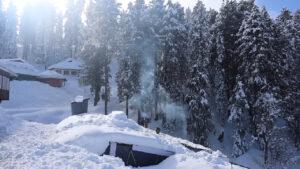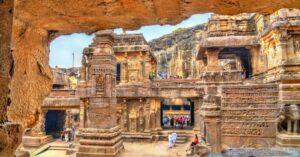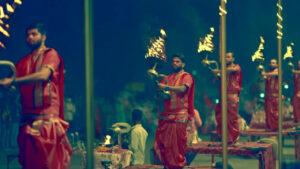Pre-wedding shoots have become an essential part of the wedding journey, offering couples a chance to capture their love story in a personal and artistic way. Delhi, with its blend of rich history, contemporary architecture, and serene landscapes, offers a wide array of picturesque locations. Among the many scenic spots in and around the city, “The Perfect Valley” stands out as one of the best pre-wedding shoot locations in Delhi.
Nestled just outside the hustle and bustle of the city, this valley is a serene, lush haven perfect for couples looking to create beautiful, intimate memories. Whether you’re aiming for a natural, rustic shoot or something more modern and cinematic, The Perfect Valley provides the ideal backdrop for any theme.
1. The Charm of The Perfect Valley
Located on the outskirts of Delhi, The Perfect Valley is a hidden gem, offering a refreshing escape from the crowded city. This verdant valley is known for its tranquil ambiance, where rolling hills, lush green meadows, and flowing water create a perfect, picturesque setting. The valley is a versatile location, providing options for outdoor photoshoots with a natural feel or even more structured, stylish shoots depending on the couple’s preference.
You May Read
The landscape here is stunning year-round. In spring, the valley bursts into life with vibrant wildflowers and blossoming trees, offering rich colors perfect for photos. During the monsoon season, the valley is lush and cool, while in winter, the fog and mist add a mystical touch to the shoot, making it even more romantic. This diversity in scenery allows couples to choose the perfect vibe for their pre-wedding shoot.
2. Why Choose The Perfect Valley for a Pre-Wedding Shoot?
There are several reasons why The Perfect Valley is considered one of the best pre-wedding shoot locations in Delhi:
Natural Beauty
Valley is an untouched natural wonder. It boasts pristine lakes, sprawling meadows, and towering trees that create a peaceful, idyllic setting. If you’re a couple who loves nature, the lush greens and natural beauty of this location will provide the perfect backdrop to your pre-wedding photographs.
Variety of Backdrops
The Perfect Valley has a wide range of spots that cater to different styles of photography. From serene lakes and flowing streams to rocky terrain, and secluded forests, each corner of the valley offers a unique backdrop. Couples can opt for shots in the meadows, in front of the water, or amongst the trees—each scene has a distinct vibe, ensuring that no two photos are alike.
Privacy and Peace
Unlike the more famous tourist spots in Delhi, The Perfect Valley is relatively unknown to many. This makes it an ideal location for couples looking for privacy during their pre-wedding shoot. There’s no need to worry about crowds or intrusive tourists. The peaceful surroundings allow couples to relax, be themselves, and enjoy the moment.
Romantic Atmosphere
The secluded atmosphere of the valley, combined with the serene beauty, adds to the romantic vibe. Imagine walking hand-in-hand with your partner down a tree-lined path, with birds chirping in the distance, or sitting by a serene lake, gazing into each other’s eyes. The valley offers an enchanting, almost dreamlike experience that will translate beautifully into photographs.
Access to Professional Photographers
Since this location is becoming increasingly popular for pre-wedding shoots, many professional photographers are familiar with it. This means couples can easily find experienced photographers who know how to capture the best angles and moments within the valley. The wide-open spaces and natural lighting provide opportunities for photographers to experiment with different shots and creative techniques.
3. Best Pre-Wedding Shoot Ideas for The Perfect Valley
Perfect Valley offers limitless opportunities for creative pre-wedding photoshoots. Here are a few ideas to inspire your shoot:
1. Sunrise or Sunset Shots
The valley is perfect for capturing the beauty of the early morning or evening. You can opt for a sunrise or sunset shoot to make the most of the soft, golden light. The sun casting its glow over the rolling hills and shimmering waters will create a magical atmosphere. These shots will add a touch of warmth and glow to your photographs.
2. Nature Walks and Candid Shots
Walk hand-in-hand through the lush meadows, and let the photographer capture candid moments of you laughing, holding hands, or sharing a quiet conversation. These natural, unposed moments will evoke genuine emotions and allow the beauty of nature to frame your love story.
3. Lakeside Romance
The Perfect Valley is home to several small lakes that create a calm, reflective ambiance. You can sit by the water’s edge, share a moment of tranquility, or even have a boat ride to add a unique touch to your shoot. The reflective water and the surrounding greenery will create mesmerizing shots that feel both romantic and cinematic.
4. Vintage-Themed Shoot
The valley’s rustic charm makes it an ideal location for vintage-style shoots. You can bring props such as bicycles, old-school picnic baskets, and vintage cameras to add a nostalgic touch to your photos. The combination of old-world charm with nature’s beauty will give your shoot an elegant, timeless feel.
5. Adventure and Fun Shots
If you prefer a more playful vibe for your shoot, The Perfect Valley is perfect for adventurous shots. Whether you want to jump, run through the meadows, or play games like frisbee or kite flying, the open space and natural surroundings give you the freedom to express yourselves in a fun and carefree way.
4. Best Time to Visit The Perfect Valley for a Pre-Wedding Shoot
The valley offers beauty year-round, but the best time for a pre-wedding shoot would depend on your preferred style:
Spring (March to May)
Spring is the ideal season for couples who want vibrant colors and a lively backdrop. The weather is pleasant, and the valley comes alive with blooming flowers, making it perfect for outdoor shoots.
Monsoon (June to September)
The monsoon adds a mystical element to your shoot. The valley turns a deep green, and the fog creates a dreamlike atmosphere, perfect for those seeking a romantic and mysterious vibe.
Autumn (October to November)
Autumn brings cool, crisp air and beautiful golden hues to the valley. The valley’s landscape turns a mix of warm reds, oranges, and yellows, offering stunning colors for your photos.
Winter (December to February)
Winter in The Perfect Valley adds an ethereal beauty, with morning mist and fog creating a surreal and romantic vibe. It’s ideal for couples who want intimate, cozy photos amidst the quiet, still landscape.
5. How to Reach The Perfect Valley
The valley is located just a short drive from Delhi, making it easily accessible for couples. You can rent a car or hire a cab to reach the location, which takes around 40 to 60 minutes from central Delhi, depending on traffic conditions. It’s advisable to plan your trip early in the morning to avoid heavy traffic and enjoy the peaceful atmosphere.
6. What to Bring for Your Pre-Wedding Shoot
For the best experience, it’s essential to come prepared for your pre-wedding shoot at The Perfect Valley. Here’s a list of things to bring along:
- Outfits: Bring a few outfits in different colors and styles to create variety in your shots. Consider bringing both casual and formal wear for different moods.
- Props: Consider props like vintage bicycles, flowers, picnic baskets, and scarves for added charm.
- Comfortable Shoes: Since you will be walking and exploring the valley, comfortable footwear is essential.
- Snacks and Water: Pack some refreshments to stay hydrated and energized throughout the shoot.
Perfect Valley offers a stunning setting for a pre-wedding shoot in Delhi, combining natural beauty with a serene atmosphere. Dramatic, cinematic shots or something more intimate and natural, this location can cater to all types of pre-wedding photoshoots. Its varied landscapes, private ambiance, and versatile settings make it one of the top locations to capture your love story before the big day.







